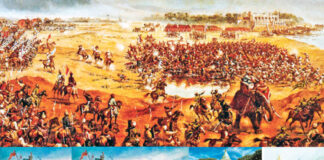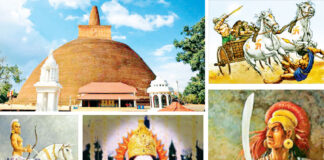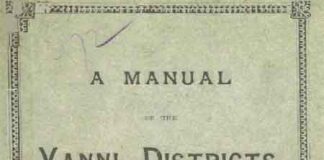lanka
අපිට අයිති උරුමය අඩමාන වඩ්ඩමාන පුදබිම
පර්වතය මුදුනේ සෑයවල් දෙකක පාදම් කොටස් කටාරම් කෙටූ ලෙන් අටක් ශිලා ලිපි වඩ්ඩමාන පුරාවිද්යා භූමිය බෞද්ධ පුදබිමක් බව ඔප්පු කරන්න හොඳම සාක්ෂි…
වඩ්ඩමාන පර්වතයේ එල්.ටී.ටී.ඊ...
Heritage: Ambassadors of peace (Part IX)
Buddhaghosha Thera; a Dravidian origin?
During the time of King Mahanama (410 – 432 CE) the well-known Pali commentator, the Theravada Buddhist monk Ven. Buddhaghosha...
Heritage: Ambassadors of peace (Part VIII)
Explaining further the situation of Buddhism in South India, Former Joint Director General of the Department of Archaeology, Government of India, T.N. Ramachandran writes...
Heritage: Ambassadors of Peace (Part VII)
While we examine the political allies and animosities between the Sinhala kingdom and the South Indian kingdoms we must also study the situation of...
Heritage: Ambassadors of peace (Part VI)
According to A Concise History of Ceylon by Prof. Senerath Paranavitana and C.W. Nicholas, based on archaeological and literary evidence, the creators of a...
Heritage: Ambassadors of peace (Part V)
Damedas or Damelas in local chronicles
The first Damilas to be mentioned in local chronicles are sailors who were engaged in Horse trading. These traders...
A MANUAL OF THE VANNI DISTRICTS, CEYLON
BY J. P. LEWIS, EsQ. Of the Ceylon Civil Servise.
COLOMBOH. O. COTTLE, ACTING GOVT PRINTER, CEYLON.1895
PREFACE
A FEW words are necessary by way of preface...
ස්වාධීනත්වය සහ ජාතිකත්වය කරා ගමන් මගේ පිය සටහන්
(1948 -1977 දක්වා ලංකාවේ දේශපාලන, ආර්ථික, ආගමික, සංස්කෘතික හා සාමාජික පරිවර්තනය)
ප්රථම මුද්රණය - 2022ISBN: 978-624-5401-01-7උපදේශනය - කීර්ති ජයසූරියසංස්කරණය - ආචාර්ය පොල්ගස්වත්තේ පරමානන්ද හිමි, චන්දිම...









